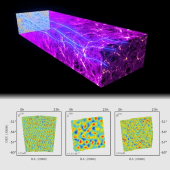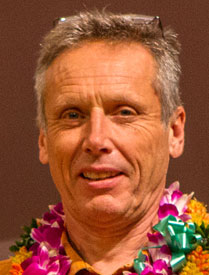本文章最後由 iheby 於 2016-3-14 11:20 編輯
重力透鏡如何影響宇宙學距離的紅移關係? @香港科技大學 賽馬會高等研究院

How Does Gravitational Lensing Affect the Cosmological Distance Redshift Relation?
A long standing question in cosmology is whether gravitational lensing biases the distance-redshift relation D(z) or the mean flux density of sources.
The problem was first considered by Jacob Zel'dovich in the early 1960s and reconsidered by many others since. Yet the situation remains confused. Steven Weinberg, for example, argued in 1976 that there is no effect on the grounds of flux conservation, yet that seems to conflict with other calculations and with the 'focusing theorem' obtained from Raychaudhuri's equation. Interest in this has been rekindled by recent results from second order relativistic perturbation theory which find biases qualitatively similar to those suggested by the focusing theorem. If correct, such bias would have profound implications for both supernova and CMB cosmology. John Peacock and the speaker have recently revisited this. In their paper, they make two main points: First, following Kibble and Lieu 2005, a relatively large bias in the source averaged distance D(z), for instance, was shown, but it is purely of a statistical nature and arises simply because D is a non-linear function of flux density, which itself is almost exactly unbiased. The speaker argues that some of the apparent contradictions and recently claimed significant effects result from confusion between different types of averaging (specifically between averaging over sources and averaging over directions on the sky). Second, the speaker carefully examines Weinberg's argument that there should be no effect. In this he makes the implicit assumption that the area of a surface of constant source redshift is unperturbed by lensing. The speaker shows that, while this is not strictly correct, the fractional perturbation to the area is on the order of the cumulative light deflection angle squared, or about a one part in a million effect. This effectively validates the conventional approach to CMB analysis and provides a firm basis for SN1a cosmology.
時間:2016.02.29(一) 15:00 ~ 16:30
地點:香港科技大學 陳冠貞論壇 (LT-H)
講者:Prof Nick Kaiser (Professor of Theoretical Astrophysics, University of Hawaii)
語言:英語
歡迎公眾參加,座位先到先得

【講者】
【圖片】Herschel throws new light on oldest cosmic light
|